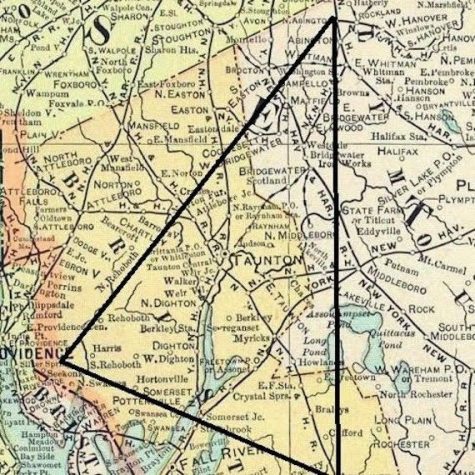Conspiracy Corner – Kinross
Welcome back, Mavericks, to Conspiracy Corner. In the field of aviation, accidents happen. And when they do, lives are lost. Even the Air Force is not an exception. In 2018 alone, thirty-eight American pilots and crew were killed in accidents ranging from mechanical failure to training mishaps. The sad fact of life is that, unfortunately, it’s not uncommon for American pilots to die on the job because of some mischance. Yet, in 1953, two pilots went missing somewhere over the Great Lakes and were never discovered. And while it might be easy to write this off as one of countless accidents, the circumstances around the disappearance seem to imply that the answer is just not that simple. Join us as we take to skies, chasing after the truth of the Kinross Incident.
The date was November 23rd, 1953. The place was Kinross Air Force Base, Michigan. An unknown object popped up on the radar, moving about five hundred miles per hour over Lake Superior. Given that the object was flying through a restricted area, command made the decision to send an interceptor out to investigate. An F-89C fighter jet, manned by pilot Lt. Felix Moncla and radar operator Lt. Robert L. Wilson, launched at 6:22 PM and followed the unidentified blip on the radar.
As the jet gained on the unknown object, the two dots on radar drew closer. Until, at 6:55 PM, the two dots met. And vanished.
To this day, the bodies of Felix Moncla and Robert L. Wilson, as well as the remains of their jet, are still missing. So, what happened?
I know what you expect me to say. It’s what everyone expects me to say when discussing anything with the words “unidentified flying object” in it. Aliens. And from the look of things, they seem to be the prime suspect. An unknown object flying into a restricted area and suddenly vanishing right as it claims its victims? It looks like an open and shut case of alien abduction. But for once, I’m going to have to put on my skeptic hat because, really, I’m not convinced.
Let us take a look at the explanation put forth by the Air Force itself: a case of mistaken identity. Supposedly, the plane the F-89C was chasing was actually a Canadian Royal Air Force transport plane. It is believed that, as the jet drew closer, the pilot had to abruptly change direction to avoid crashing into it. The official statement was, as published in the Nov. 24th article of State Journal newspaper, “Their F-89C vanished suddenly from the radar screen as they approached the other plane, later identified as a Canadian C-47 transport 30 miles off its course.” The article goes on to say, “Col. Shoup said he believed Ltd. Moncla and Wilson must have suddenly overtaken the slower transport plane and ‘peeled off’ to avoid a collision. The jet perhaps stalled and went into a spin, crashing into the lake, he said.”
Yet, it seems this explanation is not collaborated by the Canadian government. To the supposed presence of the C-47, the Chief of the Air Staff at the Department of National Defense stated in a 1961 letter, “A check of Royal Canadian Air Force files has revealed no report of an incident involving an RCAF aircraft in the Lake Superior area on the above date.”
This seems to completely sink the explanation, but further investigation may salvage it. Thanks to some very impressive investigation on the part of UFO*BC – a non-profit organization stationed in British Columbia and dedicated to researching supposed UFOs, we may have been able to find the pilot of the supposed craft. By using the serial number mentioned in the Accident Report, the UFO*BC used personnel records to identify who could possibly be flying a Canadian C-47 that day. This eventually led him to one Gerald Fosberg, the elusive pilot.
Fosberg commented that he was, indeed, out flying that night. In a reply letter to UFO*BC, he writes:
I’m your man! I was at the time indeed serving with the 412 Sqn. At Rockcliffe, doing what I loved best – flying aeroplanes. At the time I was a Flight Lieutenant, married with our first of three children on the way. Served 28 years and retired in May 1974 as a major. Continued flying Corporate Jets for another twenty years.
I remember the flight reasonably well and just checked my log books to confirm the date. It was a night flight. We were probably at 7,000 or 9,000 feet over a solid cloud deck below and absolutely clear sky above.
Somewhere near Sault Ste. Marie, and north of Kinross AFB, I think a ground station (can’t remember whether it was American or Canadian) asked us if we had seen another aircraft’s lights in our area. I do think I recall them saying at that time that the USAF had scrambled an interceptor and they had lost contact with it. We replied that we had not seen anything. A few days later I received a phone call from somebody at Kinross who was carrying out an investigation on a missing aircraft. I could only tell them that we had seen nothing. That was the last I ever heard of the incident.
Sorry! However, if the mystery is ever solved please, would you let me know the answer.
There are few key things worth noting on there. The pilot claims to have not seen any interceptor. However, note that Fosberg places his plane somewhere between seven-thousand and nine-thousand feet. According to an article on the case by Mackinac Journal, the F89-C was flying at an altitude of thirty-thousand feet before descending to seven-thousand feet shortly before disappearing. If the F89-C was descending from above, it may have come upon the Canadian plane without being seen.
But this doesn’t satisfy every question. For instance, even if the F-89C broke off quickly and dropped below radar range, that wouldn’t explain why the Canadian C-47 also dropped off radar at the exact moment of collision. Furthermore, this explanation only works if Fosberg’s reply is being truthful. At the end of the day, we can’t be sure who sent that email to UFO*BC. And even if the jet went into the lake, why has the wreckage remained undiscovered to this day? What became of the jet’s debris?
Well, an answer seemed within reach in 2006. An organization by the name of the Great Lakes Dive Company claimed to have discovered the crash of Moncla and Wilson’s jet. An article from the time by UFO Digest states, “In the summer of 2005, The Great Lakes Dive company was testing some new equipment – wide trajectory side-scan sonar…” The article goes on to say, “They had just begun searching the area, using the new wide trajectory side-scan sonar, and on their first pass located an object on the bottom. It was a plane and the scans proved it was an F-89.”
However, that’s not all they supposedly found down there. According to the Great Lakes Dive Company, there was a metallic disc not matching parts of any known aircraft. This discovery shocked many, believing that there was proof that the Kinross Incident was more than some freak accident. But then, suddenly, it all vanished. The Great Lakes Dive Company cut all contact with reporters. It was quickly discovered that the company never existed, being unheard of by local divers and lacking any official registration or license. This leads many to conclude it was all a hoax. Others still claim it to be part of an elaborate cover-up.
Though I find myself on this rare occasion supporting the ‘official’ statement, I am still open to any possibility. Because, truly, we will never know what happened so long as the wreckage of the plane remains lost. But amidst all of the mystery and conspiracy, it is easy to lose sight of what happened that day: two families lost people they loved. We here at Conspiracy Corner extend our condolences to their loved ones and hope someday there may be a definitive answer to their fates. Until that day, however, keep an eye on the sky. You never know what you’ll see.







